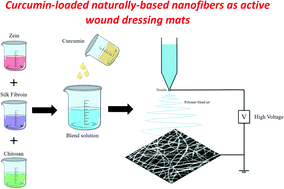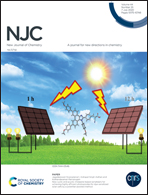Curcumin-loaded naturally-based nanofibers as active wound dressing mats: morphology, drug release, cell proliferation, and cell adhesion studies
Abstract
A perfect wound dressing should be able to maintain a high moisture content, manage exudates effectively, provide thermal insulation, and provide reliable mechanical strength. In this study, we attempted to design the desired wound dressing with curcumin (Cur) loaded electrospun zein–silk fibroin–chitosan (ZSFC) nanofibers to improve the bioavailability of Cur during the wound healing procedure. Cur with different concentrations (0.25, 0.50, and 0.75% w/v) was loaded into the ZSFC nanofibers and successful fabrication was achieved by the electrospinning method. The SEM images of the electrospun nanofibers indicate that the mean fiber diameter changed from 176.05 ± 66.21 to 484.43 ± 176.74 nm, depending on the weight ratio (wt%) of the zein:silk fibroin:chitosan. The stiffness of the nanofibers is improved when the Cur concentration is increased. Cur release investigations show a burst release at the starting stage with almost 45% of the Cur released in 10 hours. Besides, ZSFC and ZSFC/Cur nanofibers show enhanced cell proliferation and adhesion, and they do not have any cytotoxic effect on human gingival fibroblast (HGF-1) cells. Fourier transform infrared (FTIR) spectroscopy, degradation studies, and analyses of mechanical properties and thermal stability were also performed for these nanofibers. Therefore, the above results indicate the Cur-loaded ZSFC nanofibers are a potential candidate for application in wound dressing.



 Please wait while we load your content...
Please wait while we load your content...